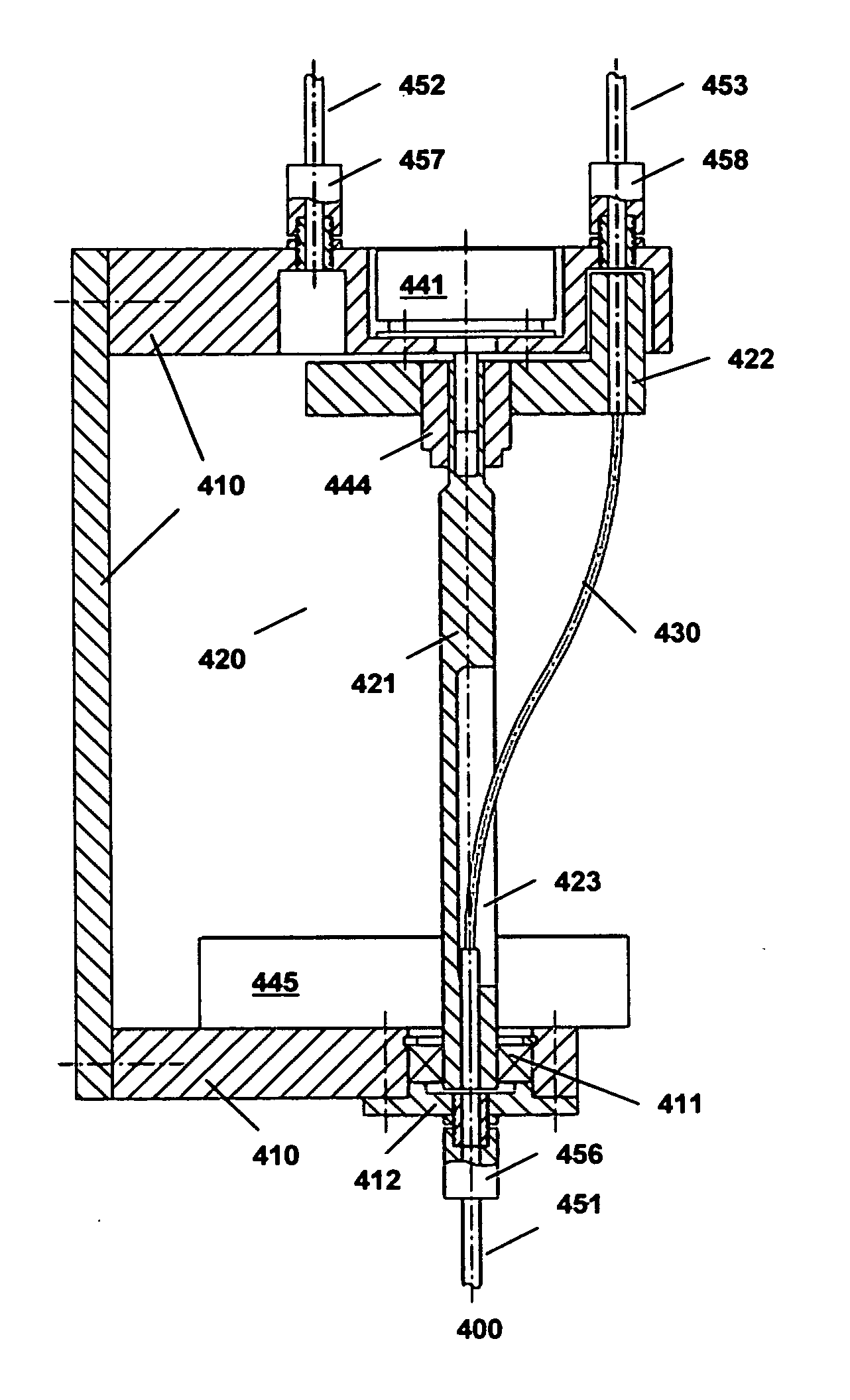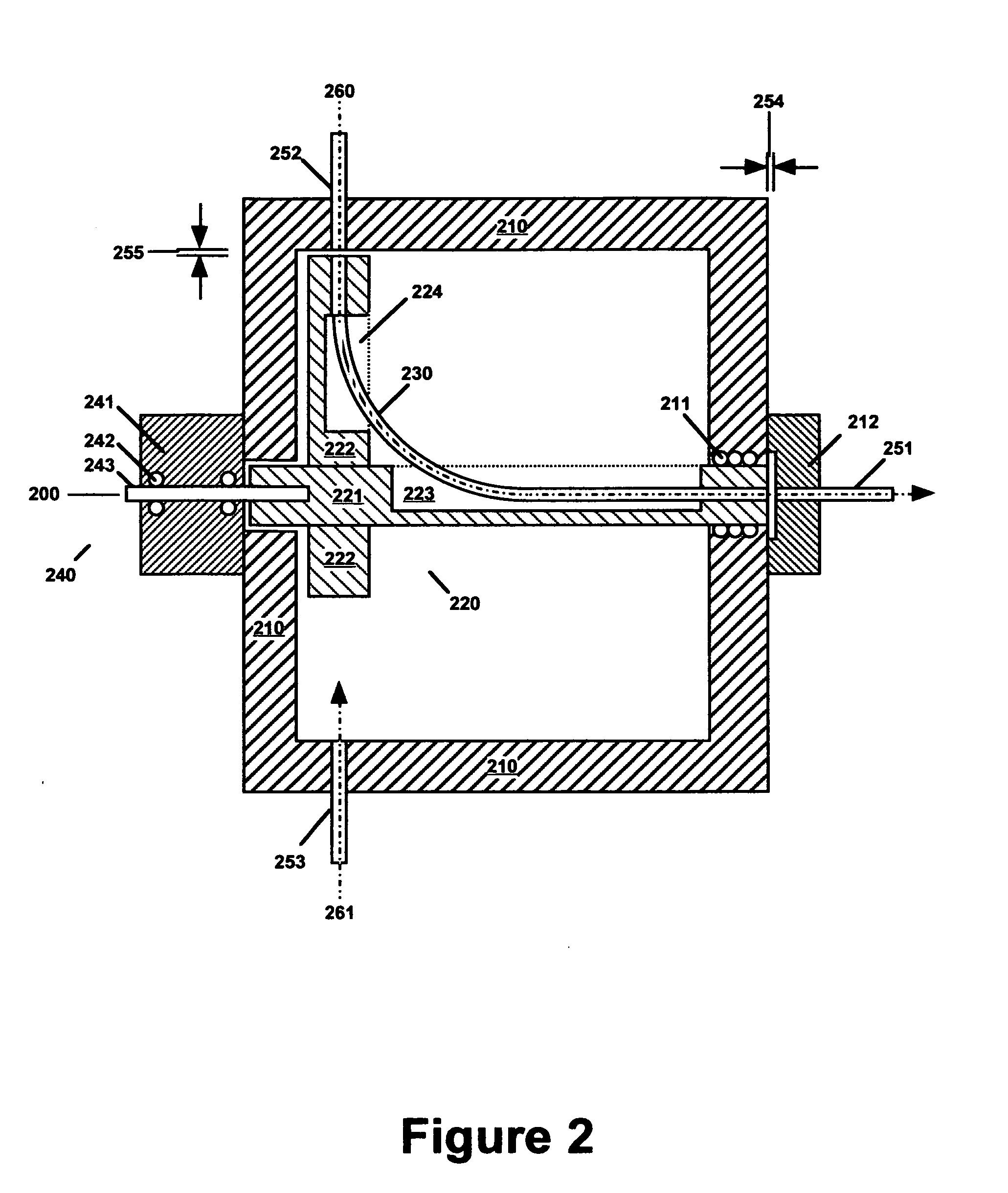Fiber optic multiplexer
a fiber optic multiplexer and fiber optic technology, applied in the field of fiber optic multiplexers, can solve the problems of reducing the beam intensity, increasing the noise level, and reducing the signal strength, and achieving the effect of reducing the beam intensity, and reducing the beam transmission ra
- Summary
- Abstract
- Description
- Claims
- Application Information
AI Technical Summary
Benefits of technology
Problems solved by technology
Method used
Image
Examples
Embodiment Construction
[0026]Terminology used in this document is generally known to those skilled in the art. The term “optical fiber” encompasses a single optical fiber as well as a bundle of optical fibers used together as a fiber optic element or probe. A preferred optical fiber for use with the invention has a single optical fiber core. Optical fibers generally have a circular cross-section and flat ends perpendicular to the optical fiber axis. In some cases, an optical fiber may comprise an optical window on one or both ends. Optical fibers may comprise a variety of optically transparent materials depending on the wavelength region involved. As applied to optical fibers, the term “end” generally denotes the end section of an optical fiber that is used for attachment but may also encompass the flat end of the optical fiber when the meaning is unambiguous. In this document, the term “geometric end” is sometimes used to distinguish the flat end of the optical fiber to avoid ambiguity. It is understood,...
PUM
 Login to View More
Login to View More Abstract
Description
Claims
Application Information
 Login to View More
Login to View More - R&D
- Intellectual Property
- Life Sciences
- Materials
- Tech Scout
- Unparalleled Data Quality
- Higher Quality Content
- 60% Fewer Hallucinations
Browse by: Latest US Patents, China's latest patents, Technical Efficacy Thesaurus, Application Domain, Technology Topic, Popular Technical Reports.
© 2025 PatSnap. All rights reserved.Legal|Privacy policy|Modern Slavery Act Transparency Statement|Sitemap|About US| Contact US: help@patsnap.com



